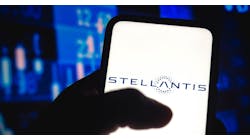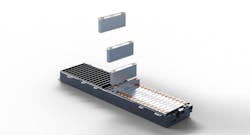Bechtel Plant Machinery Inc. continues to outfit the integrated metal 3D-printing operation it is developing in Fort Lauderdale, Fla., to manufacture parts for the U.S. Naval Nuclear Propulsion Program. BPMI awarded a contract to Velo3D to provide its Sapphire XC large format printer, to produce parts in stainless steel 415, an iron-chromium-nickel alloy with good tensile strength and high corrosion-resistance across a range of temperatures.
Bechtel is building the plant – and has contracted ATI Inc. to operate it – in order to develop and produce advanced nuclear propulsion systems for U.S. Navy nuclear-powered submarines, including vessels that are in production and those in development.
ATI Additive Manufacturing Products is a result of a two contracts totaling $889 million assigned by the U.S. Dept. of Defense to BPMI. It’s scheduled to come online this year, to produce parts that previously were produced by casting or other methods, to reduce lead times. It will be a vertically integrated operation that includes large-format metal additive manufacturing, heat treating, machining, and inspection – and in the future will add assembly of finished components.
“ATI will be able to more easily additively produce complex parts with fewer support structures, at lower angles, and larger sizes than ever before,” stated Joe Thompson, general manager of ATI Additive Manufacturing Products. “This enables us to broaden the scope of possible part designs for our defense and aerospace customers, enabling higher performance and better quality. The business opportunity represented by these previously unproduceable part designs is significant.”
The Velo3D technology involves a laser powder-bed fusion process that is described as a “fully integrated program software and hardware solution.”
“Conventional 3D printers often struggle to produce parts with overhanging features beyond 45 degrees without support structures,” according to the developer, “however Velo3D’s proprietary technology offers the ability to produce parts with a wide variety of geometries with few-to-no supports.”
“Printers with larger build volumes and the ability to print with less support structures are ideal for U.S. Naval Nuclear Propulsion Program applications,” stated BPMI executive manager Nathan Weiderspahn. “This additive manufacturing technology will greatly support our efforts in delivering new technology to the U.S. Navy and helping maintain its fleet of ships.”
Together with the large-format printer contract, Velo3D announced that the Sapphire family of 3D printers have gained the U.S. Dept. of Defense’s Green-level STIG (Security Technical Implementation Guide) Compliance certification, allowing the 3D printers to link to DoD’s Secret Internet Protocol Router Network (SIPRNet.)
“BPMI and ATI’s progressive approach to 3D printing is extremely forward-thinking and this new, revolutionary facility will significantly augment the U.S. Navy’s supply chain for maintenance, repair, and operations,” stated Brad Kreger, CEO at Velo3D. “Both companies are early adopters of metal 3D printing and innovators in the manufacturing industry. We look forward to working with them as they support the U.S. Navy’s fleet, including its aging vessels.”






